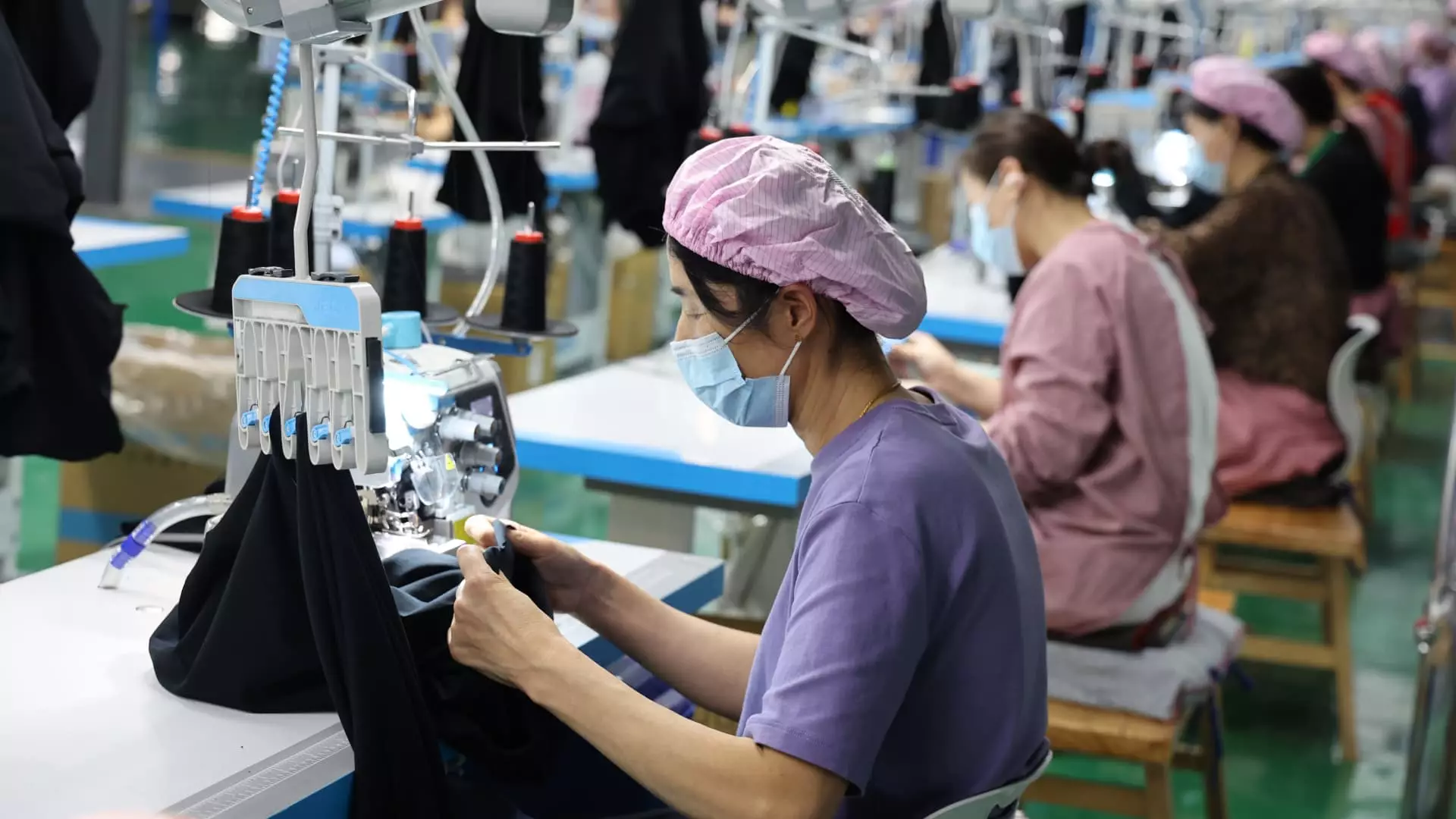The trade tensions between the United States and China have escalated to unprecedented levels, leading to repercussions that extend far beyond mere economics. As new tariffs are enacted, a visible tremor is felt within the manufacturing sectors in both countries, and the impacts are profound even on a global scale. While some might argue that tariffs are a necessary strategy to balance trade discrepancies, the real-life effects on industries and workers are irrefutably alarming. In cities that thrive on exports, factory layoffs and production halts are becoming routine, casting a dark shadow over the future of manufacturing in China.
The Hard Hits to Chinese Manufacturers
Foreign products made in China have been integral to American consumerism, from toys to athletic wear. Yet, as U.S. tariffs rise to over 100%, many Chinese manufacturers are staggering to adapt. The painful truth is that numerous factories are already struggling, forcing employers to furlough workers temporarily. Cameron Johnson, a prominent figure in consulting, highlighted a shocking reality: factories in key export hubs like Yiwu and Dongguan are reaching a tipping point, and there is no grace period in sight.
What’s astonishing is how swiftly Chinese manufacturers have begun pivoting. They are no longer solely relying on their traditional U.S. markets; with innovations in sales strategies like livestreaming, some businesses are trying to salvage what remains of their operations. Yet this pivot doesn’t mitigate the impact on jobs—an estimated 10 to 20 million workers directly rely on these exports, many of whom are now anxiously waiting for clarity amidst the chaos.
Small Businesses in a Tight Spot
Amidst this turmoil, small businesses are feeling the pinch more than anyone else. Ash Monga, a distinguished figure in supply chain management, characterized the abrupt rise in tariffs as far more damaging than the Covid-19 pandemic. Small enterprises, often operating on thin margins, are particularly vulnerable as their resources are stretched to the brink. Faced with such financial duress, Monga’s initiative to launch a “Tariff Help” website underscores the desperation felt across the board. This sentiment is eerie; the very businesses that have fueled economic growth could face extinction without urgent support.
The economic safety net for small businesses seems inadequate, casting doubt on the sustainability of their survival strategies. Unfortunately, this upheaval is not just a problem for isolated manufacturers; it signals potential stagnation in the entire supply chain. A painful collateral consequence emerges: the job loss looming in various sectors may extend far beyond factories, touching logistics, sales, and other vital services.
Consumer Behavior and E-commerce Innovations
As manufacturers adapt to this new pressure, one of the most intriguing developments is the rapid evolution of e-commerce strategies. Faced with canceled U.S. orders, companies like Woodswool are pivoting to online sales in their domestic markets, leveraging platforms like Baidu. The introduction of innovative digital strategies such as virtual sales representatives could redefine consumer engagement in ways we are only beginning to understand. Yet, it raises critical questions: Is this sustainable? Can the charm of human interaction in retail truly be replicated in an algorithmic format?
As intriguing as these developments are, the reality remains stark: enormous investments in shifting sales channels do not equally compensate for the losses incurred due to a fall-off in export demand. The focus on livestreaming and domestic e-commerce is commendable, but it cannot expunge the deeper malaise affecting the industry. The pressure for adaptability is immense, and as Ashley Dudarenok warns, the fatigue among consumers from incessant marketing strategies may lead to an even steeper decline in interest.
Global Implications: A Shaky Economic Future
Industries across the globe are now at a crossroads; they must navigate the daunting landscape shaped by fluctuating tariffs and changing trade routes. We are witnessing manufacturers increasingly turning to non-traditional markets such as Brazil, reshaping global trade dynamics. Liu Xu’s e-commerce venture selling bathroom products to Brazil epitomizes this shift; however, it is crucial to note that such adaptations cannot replace the stability provided by established, lucrative markets like the U.S.
Trade between China and emerging economies such as Ghana illustrates a broader strategy for diversification, but it also raises alarm bells regarding the long-term effects of such realignments. As countries like Ghana step up their roles as critical partners in trade with China, will they be able to sustain quality and reliability amidst a global landscape of uncertainty?
The reality is that while inventiveness and resilience come into play, the overall picture is troubling. If the tariffs persist and trade negotiations remain stalled, we could face a crisis that threatens not only local economies but also global market stability. The trends emerging from the U.S.-China trade conflict serve as a warning; a reliance on tariffs and trade wars is not a sustainable path for anyone involved.

